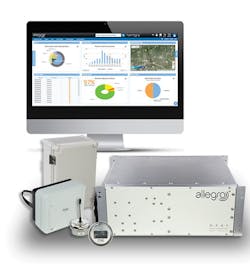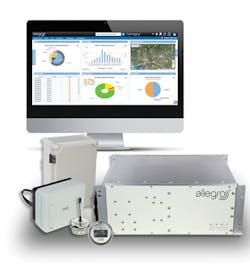Smart Antenna Technology Enhances AMI Network Reliability
The challenges of obtaining reliable RF-based water meter reads from pits and other harsh environments are many. Heavy rains, snow coverage, thick foliage, and human activity are just some of the many potential causes of signal transmission interference. A flooded meter pit directly affects the antenna resonance frequency, causing frequency shift, decreased signal strength and reduced transmission range.
These obstacles and disruptions result in inefficiency and unreliability, and they prove costly to a utility by consuming the time and energy of water system managers, engineers and employees. A recent utility survey by Black & Veatch found that water managers list ‘Reliability’ as their top concern, trumping all other considerations.
The Next Critical Step in Water Consumption Management
Now, a solution has emerged that may prove a game changer in signal transmission reliability. Multiple Resonance Smart Antenna Technology, developed by Master Meter, relies on an innovative, patent-pending, dual-band antenna transmission technology developed for the company’s advanced metering infrastructure (AMI) solution. This smart antenna is capable of adapting to fast-changing conditions by leaning on smart sensor technology that continuously monitors the RF link between the endpoint and the base station or repeater. Data is wirelessly transferred between these two components, but the electromagnetic wave can fade or weaken as distance increases or obstacles block transmission.
Multiple Resonance ‘Smart’ Antenna
Here’s how the new technology works: Multiple resonance antenna technology allows the antenna to cover more than one frequency band within a single radio. One or more resonant frequencies of the antenna serve the system in instances in which water or other obstacles are present. For example, in the 450 and 470 MHz range, when water fills a meter pit, the resonant frequency shifts roughly 6 MHz due to medium diffraction. The endpoint’s smart-sensing technology is constantly sampling the input power levels coming in from the dual-band antenna and will select the band with the higher signal strength. The benefits of this breakthrough technology are many, offering a range of potential economic and efficiency benefits, including:
- Extended battery life: The stabilized AMI endpoint and base station connection presented by the dual-band antenna technology provides increased signal strength and a predictable, stable battery performance and available lifetime power.
- Higher network reliability: In traditional systems, the connection is lost when the transmission frequency shifts by 5 or 6 MHz. This smart antenna accounts for and adapts to this shift, ensuring a more consistent connection to the AMI base station. Multiplied over many endpoints, overall network reliability is significantly improved. This antenna ensures better continuity of service and maximum transmission range, regardless of conditions.
- Reduced AMI total network costs: Master Meter’s new technology serves as the catalyst for better performance of the entire AMI network. By enhancing the range, consistency, and accuracy of readings and data transmissions - and also prolonging battery life - fewer service calls are generated while eliminating gaps in the meter reading data within the Meter Data Management (MDM) software.
Exclusive, Efficient and Effective Solution
Utilities of varying sizes have installed more than 30,000 dual-band antenna endpoints, while experiencing positive improvements in performance and reliability. By synchronizing and improving the communication between the endpoint and base station, the result is the most cost-effective AMI system available today.
Master Meter is exhibiting at AWWA’s ACE16 expo in Booth 1217.

